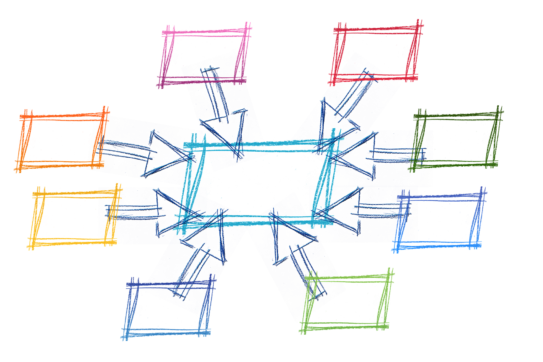The Power of Focus: Using OKRs to Turbocharge Your Foundation’s Effectiveness

One of the new management trends driving the for-profit world is the effort to implement objectives and key results (OKR) performance management systems. While may organizations can claim credit for building these systems, OKR performance management processes are often most closely aligned with the breakaway performance of Google. In a recent Forbes article, legendary venture capitalist John Doerr is credited with “…(using the OKR goal-setting system) to help a 30-person tech team transform into the 80,000-person gorilla known as Google”.
Anything that could put a company on the path towards becoming the next Google is bound to get the attention of CEOs and senior leaders in all industries. In this post, we’ll define the OKR concept and share how it could help your foundation deliver better performance and greater impact.
What are OKRs?
Objectives and key results performance systems are designed to help organizations, business units, departments, or teams drive alignment between goals (objectives) and the critical outcomes required to make those goals a reality (key results). While seemingly straightforward in definition, the OKR process when executed well has the following characteristics:
- Objectives are communicated publicly and designed for collective ownership – The objectives are shared broadly and become a core part of the objectives for every person in the organization.
- Objectives are often ambitious (i.e., “Stretch Goals”) – Google is known for setting objectives that at first glance seem unattainable, but often serve as a motivational rallying cry for the teams tasked with delivering against these objectives
- Measurement of objective attainment is nuanced – In many performance management systems, the results are measured in a binary way (i.e., either you hit the goal, or you didn’t). In the OKR process, evaluation of objective success is often done on a continuum. Google is known for defining a 70% success rate as success for evaluating the effectiveness of key results towards achieving a goal, with 100% signaling extraordinary performance.
OKRs encourage organizations to set audacious goals that are achievable through well-defined outcomes, that become drivers for the activities and culture needed to achieve breakthrough performance. OKRs also provide a way to align an organizations’ activities with their overarching strategy.
What’s an Example of an OKR?
You won’t have to search long to find examples of OKRs. Consider the following example:
Objective: Create a grocery purchase experience that turns our customers into raving fans
Key Results:
- Reduced checkout time by 20%
- Ensured 70% of checkout lines are manned by human beings at peak traffic times
- Improved self-checkout uptime by 50%.
The core objective is aspirational and ambitious. The required outcomes/key results are quantifiable and link clearly to the overarching objectives. However, it is fair to say that writing effective OKRs is part science and part art. As organizations attempt to implement the OKR system, it can take multiple tries to get it right.
Is the OKR Process Relevant for Foundations?
Every organization can benefit from a performance management system that inspires, provides direction on the required outcomes, and aligns with the top-line strategy. Foundations can use the OKR process to align every department’s effort (grantmaking, fundraising, financial management, etc.) on objectives and outcomes that quantitatively focus on maximizing impact.
Consider the following OKR for a foundation that focuses on reducing childhood obesity nationwide:
Objective: Eliminate childhood obesity in the Northeast
Key Results:
- Reduced grant funding time for approved organizations fighting childhood obesity by 25%
- Increased grant dollars available in the Northeast by 15%
- Doubled the number of supported organizations providing outcome data.
OKRs like these can add motivation and meaning to everyday activities for your foundation’s staff, as leadership can help map those activities to achieving the key results that drive achievement of inspiring objectives. Even if you’re only 70% effective in achieving this objective, imagine the kind of impact the foundation mentioned above would have on the lives of the children and families they’re serving!
Conclusion
OKR performance management systems won’t guarantee that your foundation will experience a massive leap in effectiveness. But every foundation should consider OKRs as a tool that can help move the impact needle forward.
For more general information on the OKR process, visit the Google rework blog here.


